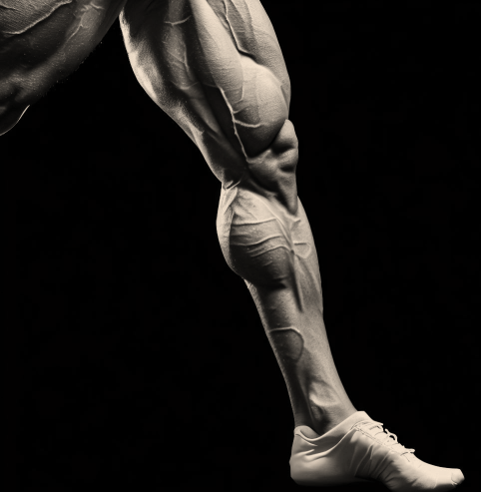Imagine your leg as a well-coordinated orchestra, where every instrument, or in this case, muscle and joint, plays a vital role in producing beautiful music – movement. In this guide, we’ll delve deep into this fascinating symphony of muscles and joints.
Introduction to the Leg’s Anatomy
Have you ever wondered what makes up the complex structure of our legs? Two primary components dominate this area: muscles and joints.
Primary Muscles of the Leg
From the bulky quadriceps to the slender calves, our legs are a powerhouse of muscles. These muscles allow us to perform a plethora of activities, be it walking, running, or dancing.
Essential Joints of the Leg
Joints like the knee, hip, and ankle play pivotal roles. Acting as connecting hubs, they ensure our bones meet and work together in harmony.
The Relationship Between Muscles and Joints
Understanding this relationship is akin to understanding how a key fits into a lock. One is incomplete without the other.
The Role of Tendons
Have you ever thought of how muscles connect to bones? That’s where tendons come in, serving as robust bridges.
The Role of Ligaments
Ligaments, on the other hand, bind bones to other bones, ensuring our joints remain stable and in place. Can you picture a door hinge? That’s a joint, and the screws? Those are like our ligaments.
How Muscles Support Joints
It’s a two-way street where muscles provide protection, stability, and motion to our joints.
Movement and Stability
Each step you take, every dance move you make, it’s all thanks to the interplay of muscles pulling and pushing joints.
Injury Prevention
Muscles, when adequately trained, act as cushions and protectors for our joints, reducing the risk of injury. Think of them as the body’s natural shock absorbers.
How Joints Facilitate Muscle Function
Joints, while less glamorous, are the unsung heroes facilitating our muscles’ actions.
Joint Flexibility
Ever tried yoga? The flexibility in your joints determines how far you can stretch and bend, with muscles following their lead.
Joint Protection
Joints house vital fluids that lubricate and prevent muscle wear and tear. Imagine it as oiling a rusty machine, making operations smoother.
Common Problems and Injuries
Alas, like any complex machinery, things can go awry.
Muscle Strains
Stretch a rubber band too far, and it snaps. The same can happen to muscles when overexerted.
Joint Inflammation
Ever heard of arthritis? It’s a result of inflammation in the joints, causing pain and restricting movement.
Keeping Your Legs Healthy
It’s not all doom and gloom. With proper care, our legs can serve us well for a lifetime.
Exercises for Strength
Like building blocks, strength exercises, such as squats, fortify our muscles, supporting our joints.
Stretches for Flexibility
Stretching is like giving your muscles a good, long yawn every morning, preparing them for the day ahead.
Conclusion and Recommendations
The dance between our leg muscles and joints is a delicate yet powerful one. By understanding their relationship and caring for them, we ensure a life of graceful, pain-free movement. So, how about giving your legs a little love today?
FAQs
- How often should I stretch my legs?
Ideally, aim for a daily routine, especially after workouts, to maintain flexibility. - What are the first signs of joint problems?
Swelling, stiffness, and pain can indicate potential joint issues. - How can I strengthen my leg muscles at home?
Bodyweight exercises like lunges, squats, and calf raises are great starters. - Do muscles heal faster than joints?
Muscles generally have a better blood supply, so they often heal faster than joints. - Are there foods that can benefit my leg muscles and joints?
Yes! Foods rich in omega-3, calcium, and antioxidants can support muscle and joint health.
For a deeper understanding of the intricacies of leg muscles and their functions, explore our comprehensive articles in the anatomy category.
